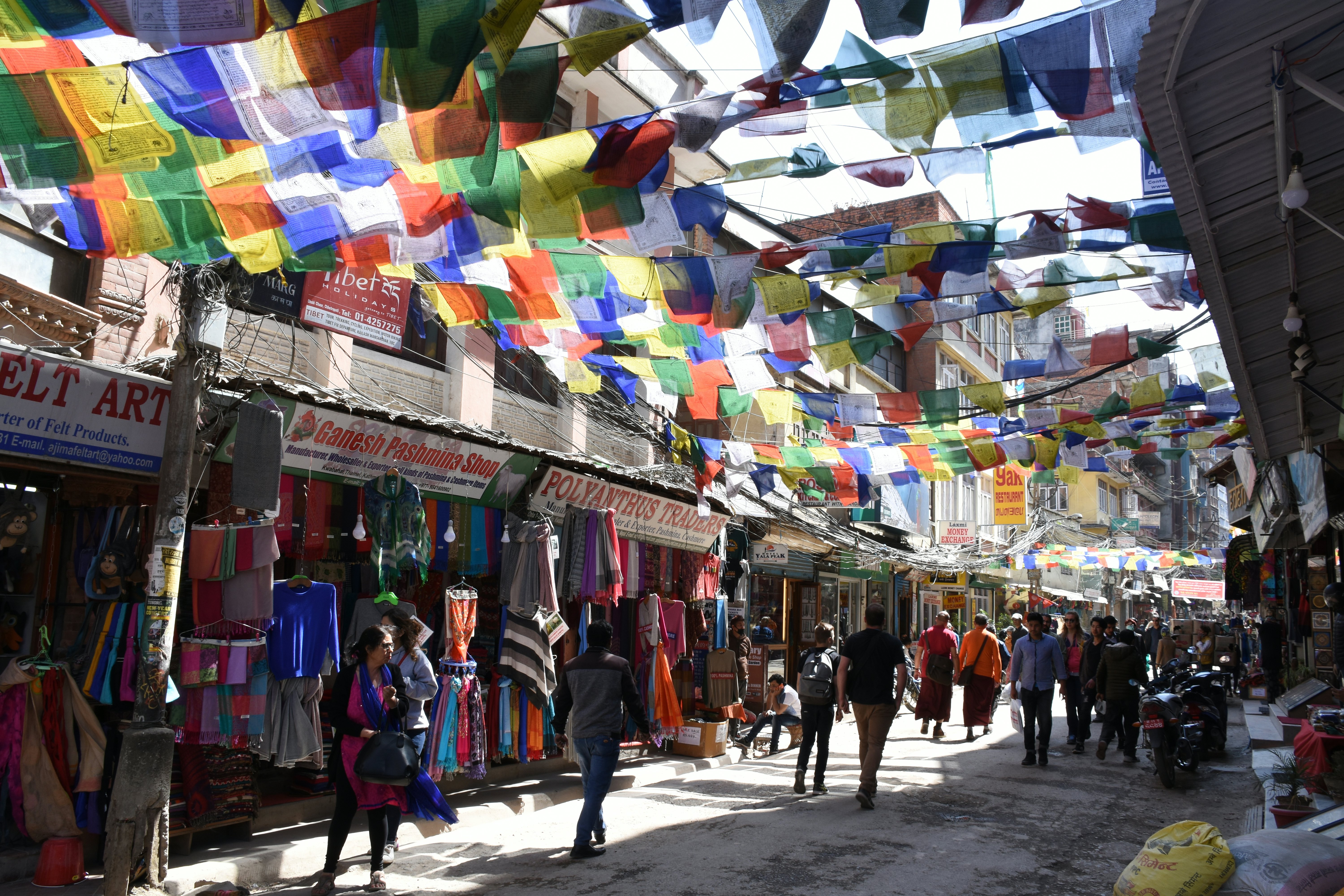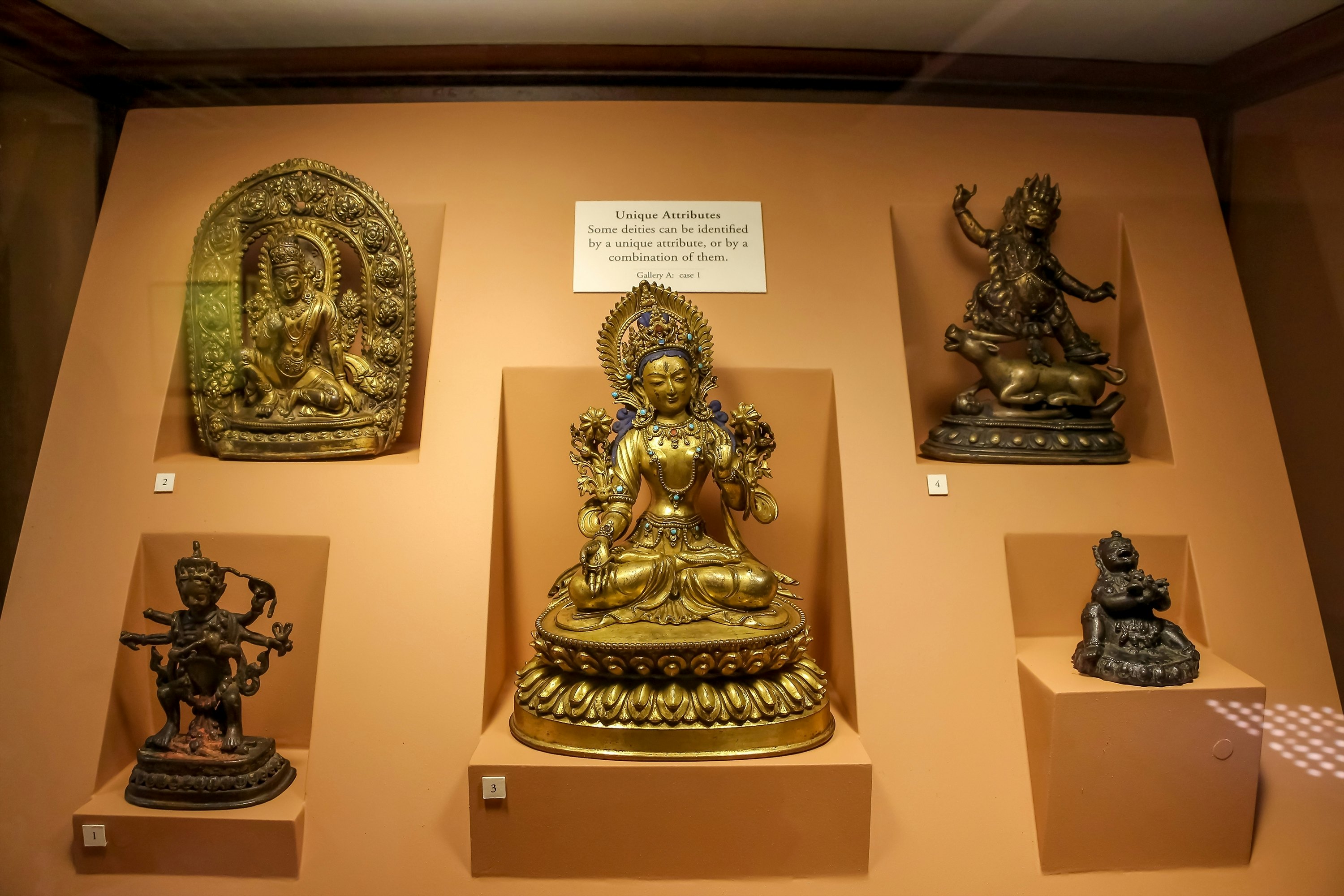

Boudhanath, a Buddhist stupa in Kathmandu, Nepal. zakir1346/Shutterstock
Always stimulating, often chaotic and sometimes sublime, Kathmandu is at its core a medieval city of temples and shrines that has morphed into Nepal’s largest and busiest city. Everyone traveling to Nepal visits Kathmandu. It’s the arrival point of all international flights, the jumping-off-point for treks to Everest and beyond, and it forms the sprawling heart of the Kathmandu Valley, a 30km long bowl that has seven UNESCO World Heritage Sites, all of which can be visited as day trips from the capital.
Some people rush through Kathmandu, shaking their heads at its pollution and gridlocked traffic. But there’s lots to see here, from medieval temples and royal palaces to Tibetan monasteries and ancient sacred stupas. Top off a perfect Kathmandu day by shopping for bargain-priced outdoor gear and impossibly soft pashmina scarves, before chowing down on a yak burger or a plate of momos (Himalayan dumplings). It’s easy to fill a fabulous week in this easy, endlessly fascinating – and only occasionally infuriating – city.

1. Wander the hidden backstreets of the Old Town
The soul of Kathmandu lies in its ancient old town, a tight, timeless warren of twisting, congested alleyways, courtyards and chowks (junctions) that date back to the 15th century. Golden-roofed temples such as the Seto Machhendranath Temple punctuate historic squares that have served as marketplaces for centuries, while hidden Hobbit-size doorways reveal hidden courtyards full of drying grain and marigold-garlanded stupas. A walk here meanders between the 21st and 15th centuries and, amazingly, there’s hardly ever another tourist in sight.
Planning tip: Our favorite place to wander is from the southern end of Thamel’s tourist district south to Durbar Square, linking together the Tibetan-style Kathesimbhu Stupa, the bustling junctions of Asan Tole and Indra Chowk, and Itum Bahal, the city’s largest courtyard. You’ll get lost; that’s part of the fun, but you can always regroup over a reviving glass of chiya, Nepali-style milk tea.
2. Soak up magnificent Durbar Square
At the heart of Kathmandu’s old town is Durbar Square, a medieval collection of multi-story Hindu temples, pavilions, pagodas and shrines that formed the power center of the ruling Malla kingdom. This is where Nepal’s kings once ruled with semi-divine power and where residents still make their daily deals with local protector gods. It’s also the location for the city’s most spectacular festivals.
There are several places not to miss. The former royal palace of Hanuman Dhoka, where the last king of Nepal was crowned in 2001, has amazing woodcarving and hosts the Tribhuvan Museum. Budget half a day to take everything in, including time soaking up the atmosphere from the nine-tiered steps of the Trailokya Mohan Narayan Temple, rebuilt after collapsing in Nepal’s 2015 earthquake.
Planning tip: Be sure to pop into the Kumari Bahal to get a glimpse of the Kumari, a young girl considered to be an incarnation of the royal protector Taleju and therefore a living goddess.

3. Go shopping for pashminas and thangkas
Fifty years of expertly sizing up foreign tourists has taught Nepali shopkeepers a thing or two about what visitors want when it comes to handicrafts. These days the entire backpacker district of Thamel is stuffed with shops selling everything from homemade paper products and moisturizing yak milk soap to bespoke silver jewelry and organic Ilam tea. Almost everything here is excellent value and makes for perfect gifts, once you realize that most of the North Face gear and antiques are local knockoffs. Bring some extra cash. And a spare bag.
Detours: Head to the Kupundol district of neighbouring Patan, a 15-minute taxi ride from Kathmandu center, for the best selection of fair-trade shops, like Mahaguthi, and one-of-a-kind handicrafts. For Tibetan-style handicrafts like singing bowls, thangkas (religious paintings), and ritual Tantric implements, head to Boudhanath.
4. Get kitted out for a trek (and recover from one afterward)
Kathmandu is the launch pad for some of Nepal’s most popular treks. Whether you are flying to the Everest region or busing to Langtang, the city is the place to stock up on trekking essentials. Pick up a head lamp or water filter in the many excellent gear shops, pick up a map in one of the dedicated bookshops, and stock up on antibiotics and Diamox tablets (for altitude sickness) at the dozens of local pharmacies. You can even rent down jackets and sleeping bags at Shona’s Alpine store.
After returning from two weeks of eating dal bhat (rice and lentils) on a trek, Kathmandu will feel like the promised land. Toast your trek with a yak steak and Barasinghe Hazy IPA at K-Too, then soothe your sore legs with a massage from the experts at Seeing Hands, an NGO that provides training and employment to blind Nepali masseurs.
Planning tIp: Kathmandu is the place to get trek permits and national park entry tickets, or even a last minute porter or guide from a reputable trekking agency. Pop in to Kathmandu Environmental Education Project (KEEP) to get last-minute tips on responsible trekking practices.

5. Chow down on a global food tour of Thamel
The range of global cuisines in traveler-friendly Kathmandu is astonishing; only the canteen of the United Nations offers more choice. In the tourist district of Thamel alone you can find authentic versions of Indian, Thai, Tibetan, Bhutanese, Chinese, Korean, Japanese, Vietnamese, Mexican, Italian and even Middle Eastern cuisines, all within two blocks of each other. Our favorites are Yin Yang for Thai, Third Eye for Indian, Utse for Tibetan and Koto for Japanese, washed down with one of Nepal’s growing range of locally brewed craft beers from the Barasinghe and Sherpa breweries.
Planning tip: Thamel offers the best budget eating options, but for higher-end fare head to Durbar Marg, Lazimpat, or even Patan, which has a fantastic range of restaurants aimed at temporary residents and wealthy Nepalis.
6. Take in views of the city from Swayambhunath
Perched on a hill west of Kathmandu and blessed with fabulous views over the city, the iconic white stupa of Swayambhunath is unmissable. Buddhists believe it “self-manifested”(swayambhu) from a lotus bloom when the entire Kathmandu Valley was a lake. The 1500-year-old white dome, golden spire and all-seeing eyes are decked in prayer flags and surrounded by dozens of smaller stupas and shrines, making it a city highlight. As you ascend the hill up stone stairways, watch out for the marauding monkeys that give the site its popular alternative name: the Monkey Temple.
Detour: After visiting the stupa, descend to the base of the hill to follow Tibetans on a kora (circumambulation) around the monasteries and prayer wheels that encircle the site. Feel free to join in, but remember to spin prayer wheels and walk around stupas clockwise.

7. Take a day trip to Patan
One of the best things you can do in Kathmandu is leave – and head to nearby Patan, once a rival to Kathmandu and now essentially its southern suburb. Like Kathmandu, Patan centers on a spectacular Durbar Square, stuffed with ornate temples, pagodas, shrines and royal courtyards. An additional highlight here is the Patan Museum, Nepal’s finest, which provides an invaluable primer to the deities and iconography that you’ll see throughout the country.
It’s also worth investing a couple of hours to wander Patan’s fascinating backstreets, past hidden highlights like the magnificent Golden Temple and the four ancient stupas that date back to the emperor Ashoka.
Planning tip: Patan is perhaps the best place in the country to try traditional Newari food, from fried lentil pancakes (wo) to spiced barbecue meat known as choila. Try the socially responsible Village Cafe or sophisticated Raithaane, which serves seasonal fusion dishes from across Nepal.
8. Visit the Tibetan stupa of Boudhanath
Nepal’s biggest and most important Buddhist stupa is at Boudhanath (or Boudha), 5km (3.1 miles) northeast of Kathmandu and a fabulous half-day excursion from the capital. Over 100m in diameter and dating back to the sixth century, the stupa is one of the world’s largest and serves as a focal point for Nepal’s exiled Tibetan community, many of whom circumambulate the stupa from dawn to dusk. It’s hard not to be pulled into their centrifugal tide, as they spin prayer wheels and prostrate themselves around the stupa. Aim to be here at dusk, when the stupa is lit by hundreds of atmospheric butter lamps.
Detour: Boudhanath’s backstreets are stuffed with colorful Tibetan gompas (monasteries), as well as shops selling essential Tibetan accessories, from yak butter to juniper incense. Several of the monasteries offer introductory meditation classes or courses on Tibetan Buddhism, notably at nearby Kopan Monastery.
9. Plug into the Kathmandu art scene
Kathmandu’s art scene was given a shot in the arm in 2020 when the Kathmandu Guest House opened its Museum of Nepal Art (MoNA) in an attempt to showcase the value of contemporary Nepali art. Many of the museum’s artists have workshops inside the guest house and welcome visitors who want to pop in and chat about their work. Another space well worth checking out is the Siddharta Art Gallery, which offers exhibits of contemporary Nepali painting, sculpture and photography in the beautifully restored Baba Mahal complex, a former Rana palace that now houses top-end restaurants and boutiques. You’ll also find quality Nepali art at Gallery 108 on Durbar Marg. Find out what’s on by checking the arts pages of the Kathmandu Post.
Detour: Head to Patan to explore the Purna Museum of Newa Art, home to a private collection of high-quality contemporary Newari religious art that opened to the public in 2023. Patan is also worth exploring for its striking street art.














